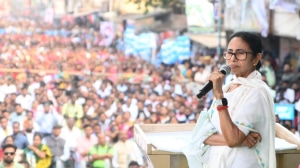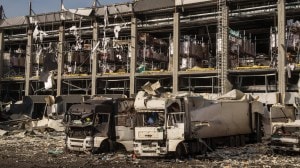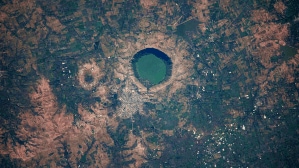Cities beyond the law
Millions of people in the developing world live in communities without security,infrastructure or any tangible evidence of the state
Nothing clarifies your thoughts on the role of government quite so much as visiting a place that isnt governed.
I once visited such a place under construction in Karachi,Pakistan. A developer was building small concrete row houses on land he didnt own. Electricity came from cables illegally hooked to the nearest power lines. Drinking water came not from plumbing but from delivery trucks. And the children told me they were not attending any school. The nearest thing to the rule of law were the police officers,who collected bribes to pretend that the neighborhood didnt exist.
Millions of people in the developing world live in communities like this,without security,infrastructure or other tangible evidence of the state. They are not strictly a result of population growth,but rather of the failure to manage its consequences. The trouble is that people are overwhelming the capacity and infrastructure of the state,even in rising economic powers like India and China.
New York once had its own ungoverned zones. But many decades of investment in infrastructure,education and policing slowly eased the citys problems.
Karachi,Pakistans largest metropolis,has grown so quickly since the country gained independence in 1947 to more than 13 million people,from about 400,000that it has become almost unrecognisable.
No single political ideology created Karachis ungoverned zones. Rather,they were spawned by decades of spastic government. National leaders veered from socialism to crony capitalism,from democracy to dictatorship. In 1958,Gen. Ayub Khan took control of Pakistan in a military coup. Fearing riots,one of his first priorities was moving people out of central Karachis informal neighborhoodswhere many lived in appalling conditions in shacks or tents.
The dictator brought in Constantinos Doxiadis,then one of the worlds leading city planners. He designed sprawling new suburbs with subsidized homes along broad streets,intending to resettle half a million people. Pakistans government soon turned its attention to other projects,however,and the suburban construction drive fell apart.
Today,informal settlement has become an industry spread over hundreds of square miles surrounding Karachi. Politically connected developers seize sections of government land and subdivide them into lots for new homesas many as 100,000 per year.
Some are sprawling South Asian McMansions. Most are tiny row houses,where poor residents are left to dig their own sewers and steal electricity. The police have worked out a standard payoff to look the other way. In 2010,the going bribe was 5,000 rupees per lot,about $57.
But there are consequences to moving the real estate market beyond the law. Greed and emotions run high. Land battles contribute to gunfights between Karachis political parties shootouts that kill far more people than terrorism does.
Violence disrupts what few government services are available in some areas. At an empty school I visited in October,the writing on the chalkboard showed that no teacher had been there since May 31. The teachers came from outside the neighborhood,and local gunfights made the commute too risky.
When governments turn instead to dreamy plans,ideological warfare or corruption,they make themselves irrelevant. As Nazim Haji,a Karachi businessman,put it,Were not a poor country. Were a poorly managed country.
Increasing wealth has allowed some people to insulate themselves from collapsing urban infrastructure. In Karachi,affluent families have hired private security guards,or bought generators to deal with daily electric blackouts.
Last year I went looking for that Karachi suburb from the late 1950s,when the suburbs were being built.
A friend helped me find one of the original houses in Korangi,and the elderly woman who was its first resident. But the old broad street had become barely wide enough for a single car. Longtime residents told me they had built new and bigger houses over the years.
People made room for the larger houses by moving the front walls forward to capture part of the street for themselves. Garbage was often left on the street,which also flooded during monsoon season,and the nearby drain was clogged. Residents said the floor of the old womans house from the 1950s had once been above ground,but was now about two feet below. Shed piled up a little dam of rocks in front of the door in hopes of keeping out the annual rains.
Afterward,I thought of ancient cities like Babylon and Sirkap,a ruined city in northern Pakistan. There,a guide had shown me a hole where archaeologists digging many feet below ground had found the remnants of buildings long gone.
It had taken centuries for the city to rise,decline and disappear. I wondered if it had suffered from a failure to mind the public interest: cleaning the drains,picking up the garbage,respecting the rule of law. And I wondered if Karachi was now experiencing a high-speed version of the process that put that ancient city underground.STEVE INSKEEP



- 01
- 02
- 03
- 04
- 05




























